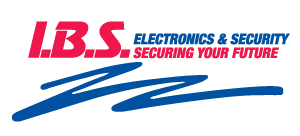An access control system serves as the primary component of any security solution and oftentimes is the interface in which third-party technologies – such as video and intrusion – connect to for a complete security solution. More and more the industry is seeing the move to open architecture access control solutions, however, open architecture in access control is more than a concept; it is a set of operational constraints that restrict to the minimum any core element of the entire system that cannot be sourced from others. In today’s truly open architecture offerings, the software will always remain proprietary; however, it constitutes the single, least expensive element of an access control system and can be readily replaced without removing or manipulating a single piece of hardware. The customer can move forward knowing that 95% of their investment in system topology and architecture is secure from planned and expensive obsolescence by the provider.
How has the access control industry evolved?
The entire computing world at one time was strictly proprietary. In other words, the election to use one piece of software or hardware dictated the requirement to get additional expansion and support from the single provider for the lifetime of that purchase. With the advent of the personal computer and the standardization of Windows as a common networking and enterprise platform—what was once the private domain of IBM and only a few others became the domain of anyone.
This change in processing naturally found its way into the integrated security equipment industry, which was totally proprietary at the time. By now, commercially available computers could be purchased anywhere.Next, was the “opening” of data. Once the market realized the inherent value in breaking away from overpriced, proprietary computers, they demanded more flexibility. The industry complied by providing openly available databases and structures that allowed customers or third parties to share the data.
The concept of open architecture in the security world moved quantum leaps forward with HID’s introduction to the market with a common, inexpensive standard Wiegand proximity line of readers and cards. Now, the market enjoyed the value of purchasing computers of their choice as well as compatible card and reader technology that served to open the market away from proprietary bit formats on cards and proprietary readers.
Today, the most important move in the security integration equipment sector, specifically as it relates to access control, is the mammoth move toward being able to claim some degree of open architecture within one’s system offering.
How does Open Options meet these objectives?
Since 1997, Open Options has been preaching and demonstrating the value of having an open architecture system to customers. With the installation of Authentic Mercury hardware, the customer can rest assured that they have numerous options in software providers that can work in conjunction with the hardware, which is in direct contrast to the customer that opts to purchase proprietary hardware from the proprietary carriers.
Open Options’ flagship access control software, DNA Fusion, is the standard in open platform access control software. It’s built using the very latest in software development technology and contains numerous customer-centric features. DNA Fusion also takes full advantage of the Authentic Mercury open hardware platform and connects with numerous industry-leading security technologies, including video management systems, intercom, wireless locks, and more, for a best-of-breed security solution. For added convenience, you can also take DNA Fusion on-the-go with our Fusion Web and Fusion Mobile applications.
InfoReady™ Design
InfoReady allows the operator to quickly retrieve information regarding cards, cardholders, hardware, status, access levels and general system information in a “heads up” fashion as opposed to running reports to obtain this information. Based on Microsoft Windows and its Explorer interface, this software will be familiar and easy to learn and use for anyone who operates a computer.
Drag and Drop
Streamline all tasks throughout the entire DNA Fusion application with drag and drop functionality. Drag an access level to quickly add access to thousands of cardholders or filter the event grid on the fly. Other capabilities include:
- Drag access levels to cardholders or apply to entire groups
- Drag doors and cardholders to event grid for quick filter
- Drag monitor points to output points to create instant IO linking
- Reassign cards by dragging to another cardholder
Event Filtering
See only what you want to see with DNA Fusion’s event filters. Event filters allow you to easily sort the events grid by personnel, hardware, or a combination of criteria. Simply drag and drop to apply a filter. You may also save filtered views for specific operator focus.
Customized Direct Commands
Create user-defined direct commands to control hardware with ease. Customize a tool bar button for one-click control of multiple doors or points, including lockdown procedures.
Informational Tool Tips
Obtain instantaneous status and important information by hovering the mouse over any object in the personnel tree, hardware tree, or graphics page.
About IBS Electronics & Security
IBS Electronics & Security is an experienced, trusted integrator of burglar alarms, fire detection, video surveillance, access control and audio/video communications. We provide custom system solutions that stay within your budget and are backed with proven reliability. Let us put our experience to work for you.



